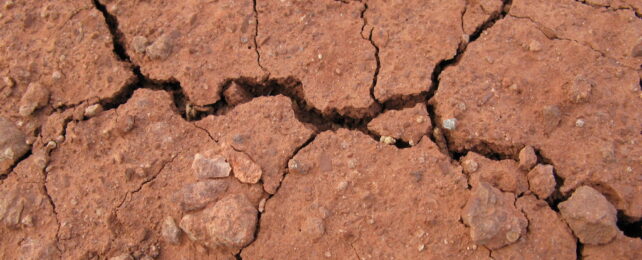The Earth is heating up, and not just its atmosphere and oceans. The soil itself is getting warmer, too, leading to more extreme soil heat around the planet – along with unclear but ominous consequences for surface dwellers like us.
We have been underestimating this problem, according to a new study, focusing on rising air and water temperatures while failing to appreciate the threat of heat waves beneath our feet.
Soil temperatures have drawn relatively little attention overall in studies of human-induced climate change, the researchers say. Partly because measurement complexities make it hard to find enough reliable data on soil temperatures compared with near-surface air temperatures.
In the new study, however, a team of researchers from across Germany gathered soil-temperature data from a wide range of sources, including meteorological monitoring stations, remote-sensing satellites, the ERA5-Land data reanalysis set, and simulations from Earth-system models.
The team relied on the TX7d index, which is meant to capture the intensity of heat extremes by averaging the daily maximum temperatures during the hottest week per year.
They calculated this index for the upper 10 centimeters (3.9 inches) of soil, and for air up to 2 meters (6.5 feet) above the surface, at 118 weather stations across Europe, using temperature data from between 1996 and 2021 to provide 160 pairs of air and soil measurements.
At two-thirds of these sites, the researchers found a stronger trend in heat extremes within the soil than in the air above it, they report.
"This means that heat extremes develop much faster in the soil than in the air," says study co-author Almudena García-García, a remote-sensing researcher at the Helmholtz Centre for Environmental Research (UFZ).
The study revealed regional variations in this phenomenon across Europe, with heat extremes becoming more intense more quickly in Central Europe, namely in Germany, Italy, and southern France.
In these areas, the intensity of heat extremes is increasing 0.7 degrees Celsius per decade faster in the soil than in air near the surface, the study found.
The researchers investigated the frequency of soil heat extremes as well as their intensity, using a different index – TX90p – that factors in the percentage of days per month when the daily maximum temperature exceeds a given statistical threshold.

They found the number of days with heat extremes is increasing twice as quickly in the soil as it is in the air.
"For example, if there are currently high temperatures in the soil and air on 10 percent of the days in a month, a decade later, there will be high temperatures in the air on 15 percent of the days and high temperatures in the soil on 20 percent," García-García says.
This boils down largely to soil moisture, the researchers explain, given its key role in influencing the exchange of heat between soil and air.
And soil moisture is in turn heavily dependent on land cover, hinting at how humans' land-use practices could be making things even worse.
In a forest, for instance, tree cover helps reduce moisture loss from soil due to evaporation, while trees' roots can draw up water from deeper in the ground. In open habitats like grasslands or agricultural fields, however, plants may only have access to soil moisture near the surface.
The ability for soil heat extremes to outpace heat extremes in the air could have major implications, and not only for the microorganisms living in soils or the broader food webs depending on them.
If soil is warmer than air above the surface, the researchers note, it may release extra heat into the lower atmosphere – not to mention additional carbon – thus exacerbating atmospheric warming.
"Soil temperature acts as a factor in the feedback between soil moisture and temperature, and can thus intensify heat periods in certain regions," says co-author Jian Peng, head of the UFZ Remote Sensing Department.
"In view of these results, studies on the effects of heat extremes, which consider mainly air temperatures but have underestimated the factor of heat extremes in the soil, would have to be re-evaluated," he says.
The study was published in Nature Climate Change.
